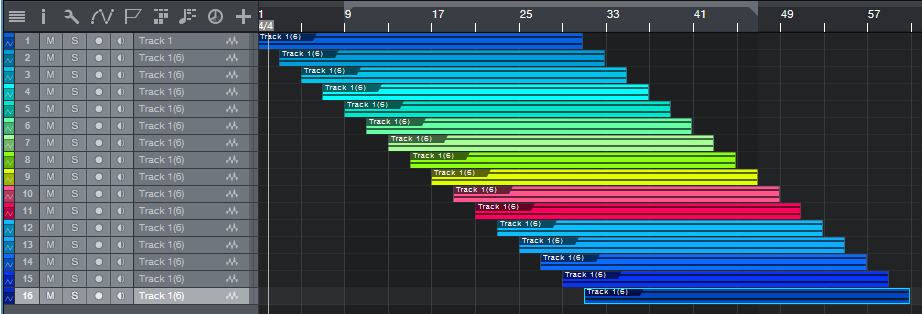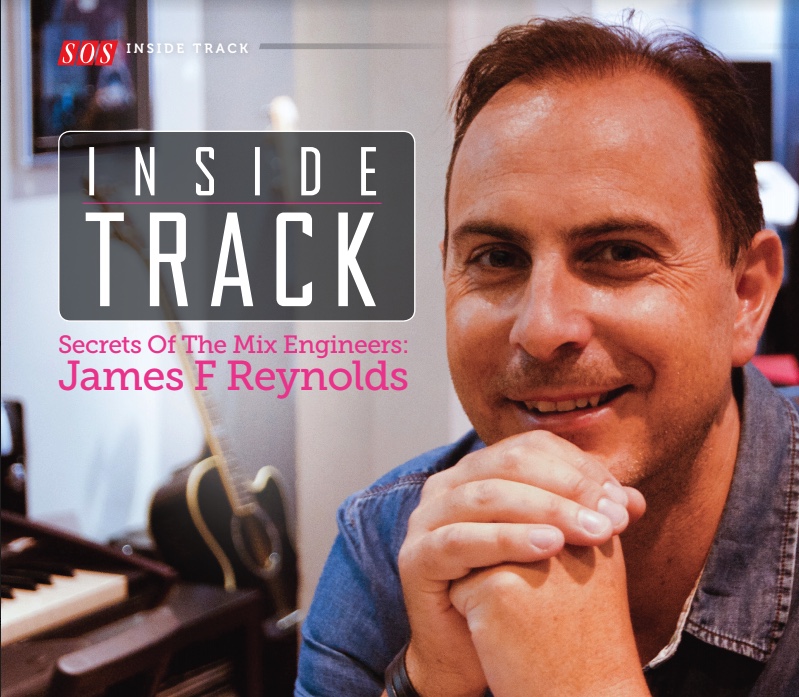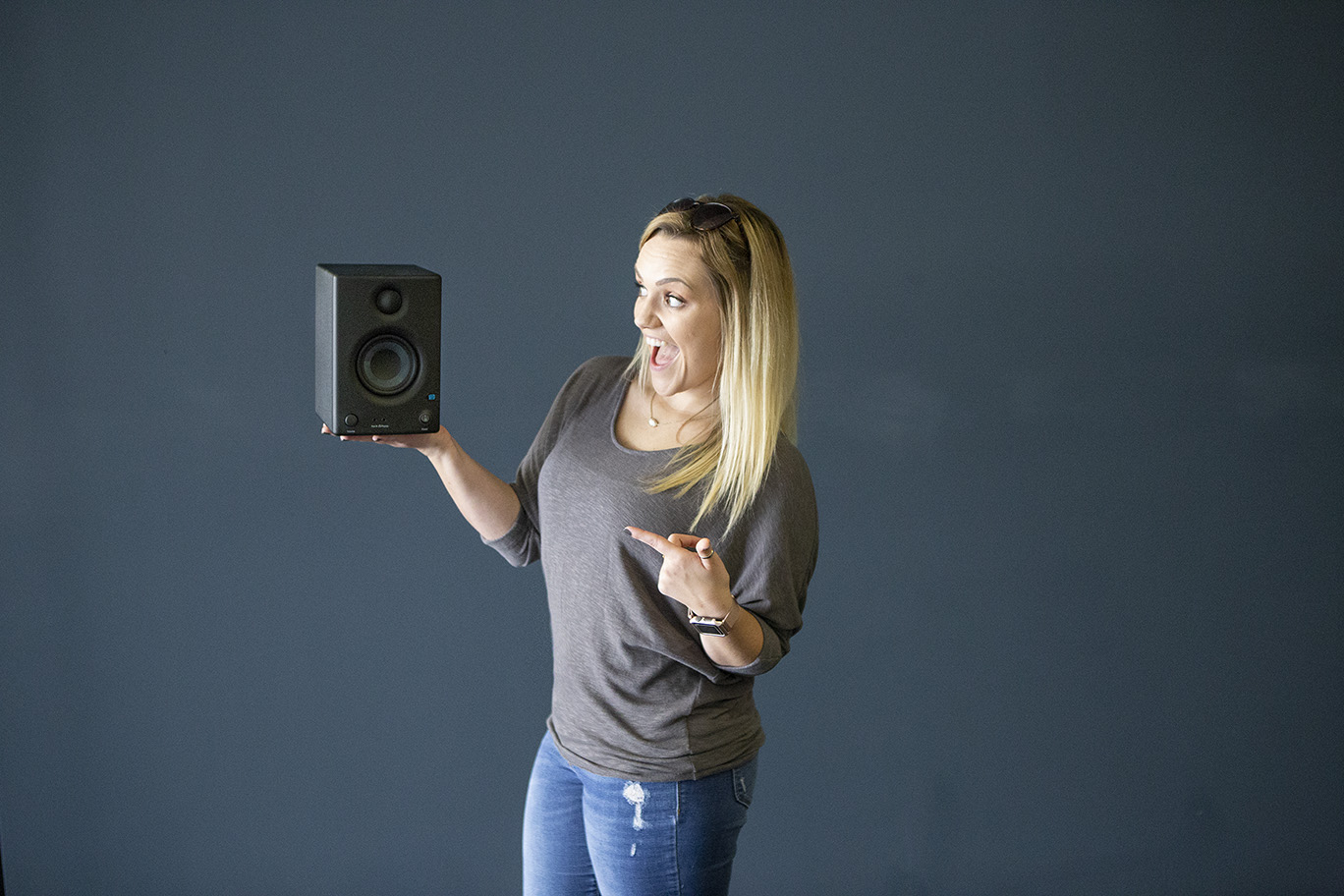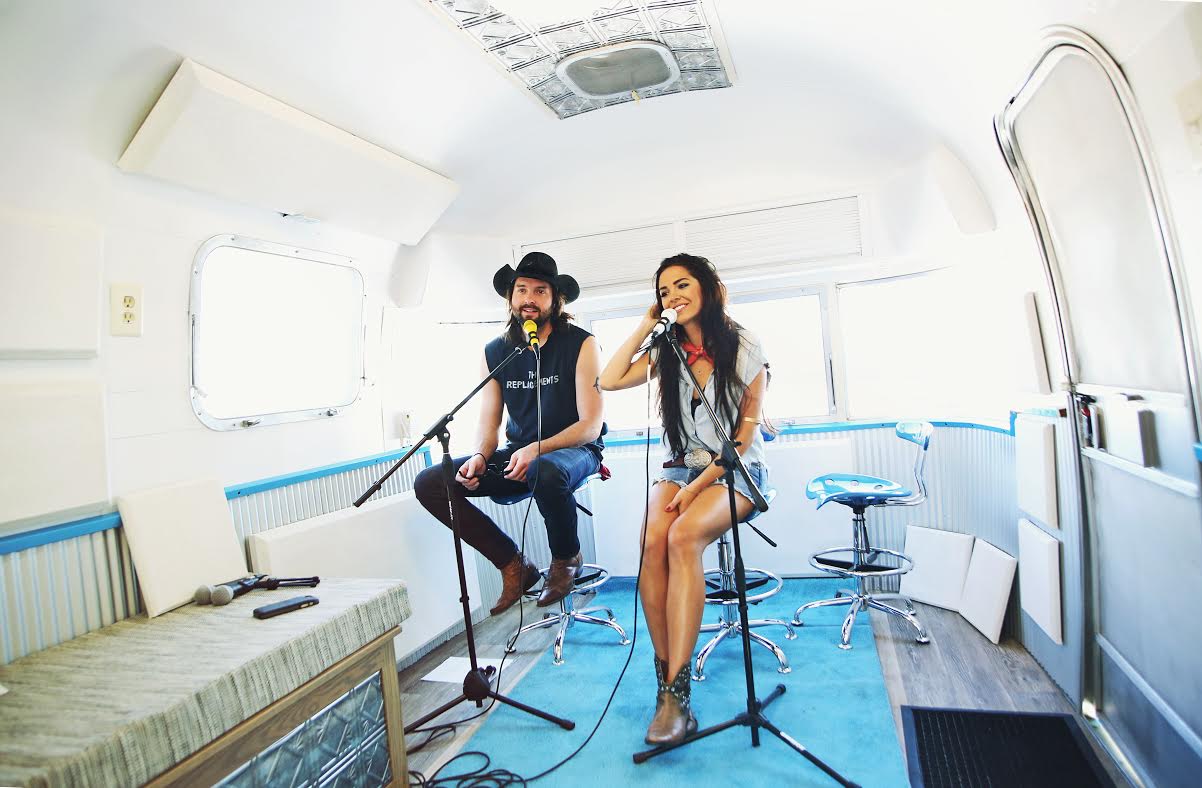Tag Archives: #TeamPreSonus
Friday Tips: Create the “Barberpole” Audio Illusion
The Shepard Tone (aka Barberpole) is an audio illusion where a tone always seems to keep rising (or falling). You may have heard it before—to build tension in music by Swedish House Mafia, Beatsystem, Data Life, and Franz Ferdinand, as the sound effect for the endless staircase in Super Mario 64, for the sound of constant acceleration for the Batpod in The Dark Knight and The Dark Knight Rises, at the end of Pink Floyd’s “Echoes” from the Meddle album, or in the soundtrack for the film Dunkirk in sections where the goal was to produce a vibe of increasing intensity. Check out the audio example, and you’ll hear how the tone just goes on forever.
Thanks to Studio One’s Tone Generator, it’s easy to produce a Shepard Tone loop—just follow the step-by-step instructions, in a song with the tempo set to 120 BPM.
- Insert the Tone Generator in the Input L+R insert section so that you can record its tone, and edit the Tone Generator generator’s settings as shown in the screen shot. The goal is the longest possible sine wave sweep from 20 Hz to 22 kHz.
- Start recording, then click the Tone Generator’s On button. After recording the file, trim the beginning and end respectively to just before and just after you can hear a tone, and add a short fade in and fade out.
- As shown above, copy the track, and offset each track’s beginning by two measures compared to the track above it. Keep copying and offsetting until the start of the last track is at the same measure as the end of the first track.
- Now select all, and drag the entire group to the right so that there’s a bit of an overlap between the two groups. Select everything, then type X to turn the overlap into a crossfade with a linear curve. Next, create a loop that extends from the start of the lowest track to the end of the highest track.
- Choose Song > Export Mixdown, set the Export Range to Between Loop, and under Options, check Import to Track and Close After Export. Solo the mixed track, and play it—you’ll hear a continuously rising tone. Now we need to turn it into a loop.
- Follow the instructions in the July 27 Friday Tip of the Week on how to create pads that loop perfectly. The above screen shot shows the basic concept; Track 1 shows the first steps. Copy the clip, move the copy to the right so it overlaps the last four measures of the original clip, and then crossfade the overlap with a linear crossfade.
- Track 2 in the screen shot shows the next step. Bounce the two clips together, then split at the end of measure 4 to remove the first four measures, and at the end of the crossfade to remove everything after the crossfade. Loop the section that remains, and you have your never-ending upward Shepard Tone, as a glitchless loop. Note that when you bring it into a project, don’t stretch it to conform to tempo—there is no tempo. And if you want it to go on forever…just keep typing D!
Bonus Tips:
- I recommend adding a Pro EQ—reduce the high frequencies somewhat with the HC (High Cut) filter, and boost the low frequencies with a bit of a shelf, to increase the illusion’s effectiveness.
- The “classic” Shepard Tone requires that the tones be one octave apart. However, offsetting them by 2 measures at 120 BPM seems close enough.
Studio One 4 User, James Reynolds, at the Top of the Charts!
Currently sitting in the no.1 and no.2 slot on the USA iTunes Charts are two songs mixed by mix engineer, music producer and songwriter James Reynolds who also is a Studio One user!

As a huge fan of the DAW, Reynolds worked with us on the development of the new Studio One 4, and it’s his go-to DAW for many reasons.
Reynolds was recently interviewed for Sound on Sound Magazine. Check out some of the article here. Here are just a few things he had to say about Studio One:
“I was on Cubase for a while, and then I switched to Logic. I stayed in Logic for a long time, rather than moving to Pro Tools, because I found Logic more creative. But when I discovered Studio One I really liked it, and today it is absolutely perfect!”
“Pro Tools and Studio One are very similar, because Studio One is designed to make it very easy to convert to for Pro Tools users, who would find it a piece of cake. Where it differs is in the drag‐and‐drop workflow, which is super‐fast. You have a sidebar with all your plug‐ins listed in your folders, and you just pull a plug‐in on the channel or the bus, and it will set up the routing for you. It is designed to be super‐quick. It has also taken a leaf out of Ableton’s book, so all your samples can be previewed real‐time and will automatically loop in time. Plus it has gone next level, for example in that you can create splits of your plug‐in signals within your channels. So let’s say you have a lead vocal, and you want to do a parallel bus for it within that channel, you do the split inside the plug‐in, and this gives you a lot of control very easily. It is all very well thought‐out and the automation is fantastic, and so is the MIDI.”
Here’s more on what he has to say on Studio One. He’s basically the expert.
One more thing…. BTS’s latest release “IDOL” mixed by James, now holds the record for the biggest music video debut in YouTube’s history with over 45 million views in the first 24 hours! So that’s awesome.
Huge congrats to James and we’re so stoked for your success! Keep up with his success here.
Join the Studio One family here!
Friday Tip of the Week – Trolling for Slices
So there you are, with your shiny new Impact XT virtual instrument. You want to populate the pads with some fun drum sounds, and although you like the included kits, you’re itching to get creative and come up with some kits of your own. Fortunately, it’s easy to use Audioloops to populate your Impact XT with a custom selection of drum sounds.
Open the Browser, and under Loops, look for files with the .audioloop suffix. The reason why .audioloop files stretch elegantly is because the loop is cut into slices, with each slice representing an individual “block” of sound—kick, snare, clap, kick and cymbal hitting at the same time, snare and high-hat hitting at the same time…whatever.
When you expand an .audioloop, you’ll see each slice listed individually. Some have only one or two slices, but others—for example, the Combo Beat loops under Electronic > Drums > Loop (Fig. 1)—are rich sources of slices.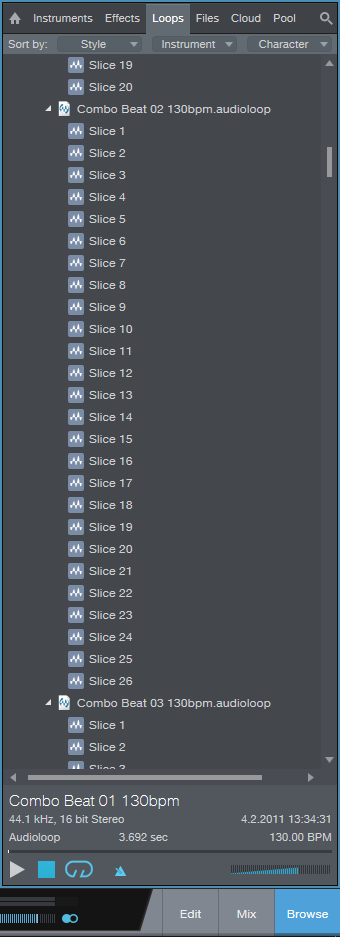
Figure 1: The Browser’s Loop tab is loaded with slices, just waiting to be used with Impact XT to create custom kits.
Next, open up Impact XT. To audition the slices, toward the bottom of the browser turn off the loop and metronome options, select a slice, and then click on the Play > button. Click on various slices and when you hear something you like, drag it over to an Impact XT pad (Fig. 2). You won’t have to click the Play button again to audition slices until after you drag a slice over.
Figure 2: Drag slices over to Impact XT pads.
The real fun begins when you start to use Impact XT’s sound-shaping options. For example in Figure 2, one of the kick slices has been dropped in pitch, truncated, filtered, and given a new Amp decay setting to sound more like an explosion. Note that the pad’s name will be the same as the .audioloop, so if you’re using multiple slices from the same .audioloop, rename the pad to avoid confusion (right-click on the pad and choose Rename).
And remember, you’re not limited to dragging over slices from the Browser—you can split any file in the Edit window at the Bend markers, and drop those slices into Impact XT.
Sure, Impact XT comes with a lot of preset, ready-to-go kits when you just want to load something and start grooving. But you might be surprised how doing a little mixing and matching with the Browser slices can create something new and different—and each new pad sound is only a click + drag away.
It’s #PreSonusFamFriday with Alexandra Medina!
Bringing back a blog favorite this season… #PreSonusFAMFriday! If you’re not familiar with the series, catch up here.
Up first is Alex Medina! She’s in charge of making sure everything gets paid for here at PreSonus. She’s also in charge of baking up all kinds of tasty treats for the office. We are coworkers but we’re also her certified taste testers and let’s just say, Betty Crocker WHO?!
Here’s more on Alex and her favorite PreSonus product the Eris 3.5s!
How long have you worked for PreSonus?
8 Months.
What’s your official job title?
Accounts Receivable and Credit Manager.
What do you love about your job?
I love the people I work with. Also, I pretty much get to talk to everyone we do business with and its awesome when they share the latest things they are working on with our products or tell me stories about how our products made their lives easier. I enjoy checking out the youtube links they send. I get introduced to all kinds of new music.
What was the first 8 track, cassette, CD or digital download you purchased?
Salt-N-Pepa “Push It.” Odd choice maybe but I heard it in a movie and it just stuck so I downloaded it same day. Remember when ring back tones were a thing? This was totally mine.
Who’s your go to band or artist when you can’t decide on something to listen to?
When that happens I turn on Spotify and listen to the new releases. You never know what you will come across.
What’s your go to Karaoke song?
Journey, “Don’t Stop Believing.”
Everyone has a side gig, what’s yours? OR when you’re not at PreSonus, what are you up to?
I’m in the Air National Guard so sometimes I’m working there., or I’m off on some new adventure with my son. Toddlers are never boring!
What instruments do you play?
I dabble in rock band… the drums… on easy. Plus it’s color coded so…
Why did you choose the Eris 3.5s as your favorite?
They are very satisfying for the size and price. I just needed some small speakers that wouldn’t clutter my desk and these work great. Almost too well, the sound is crystal clear no matter how high I turn them up, which usually isn’t the case with speakers this size. I feel people always like to talk about the big flashy and fancy products, so I wanted to give the little guys some love too!
Anything else you want to share?
Ummm PreSonus rocks and GEAUX SAINTS! #WHODAT
Learn more about one of the best selling monitors on the market, the Eris 3.5s HERE!
It’s #PreSonusFAMFriday with Kyle Poehling!
“I legitimately LOVE these speakers,” said Kyle Poehling the Software Designer at PreSonus Audio!
It’s Kyle Poehling for #PreSonusFAMFriday!

What’s your favorite thing about your job? Why did you choose to work here?
Everyone has a side gig, what’s yours?
Why did you choose this as your favorite?
Tell us about a successful event you worked with PreSonus products. InfoComm, NAMM, Install somewhere….
- Work – Currently I’m working on some VERY exciting things for the StudioLive mixers/UC Surface/Studio One family.
- Music – I’m working on a solo album and should be wrapping that up this spring and continue to gig with Think Less, Hear More in New Orleans.
- Personally – enjoying the new house my wife and I recently purchased in New Orleans! The commute can be tough, but I love this job too much to let it bother me.
Learn more about the AIR Loudspeakers here!
Keep up with Kyle on Instagram!
The beach, an Airstream and the PreSonus AR12 Mixer
Don’t get us wrong–working at the PreSonus headquarters in Baton Rouge is awesome.
But if we had the option, doing what we love at the beach is high on our wish list. Somehow that’s just what Cory Davis, with 30A company based in Santa Rosa Beach, FL, has figured out how to do in his work at 30A Radio.
30A is a highway along Florida’s gulf coast offering visitors more than just a beach vacation. Fine dining, prefect sandy beaches, weekend farmers markets, bike trails… you’re not going to want to leave. It’s also where the Truman Show was filmed. You may have seen a bright blue bumper sticker when driving around town–it looks like this:
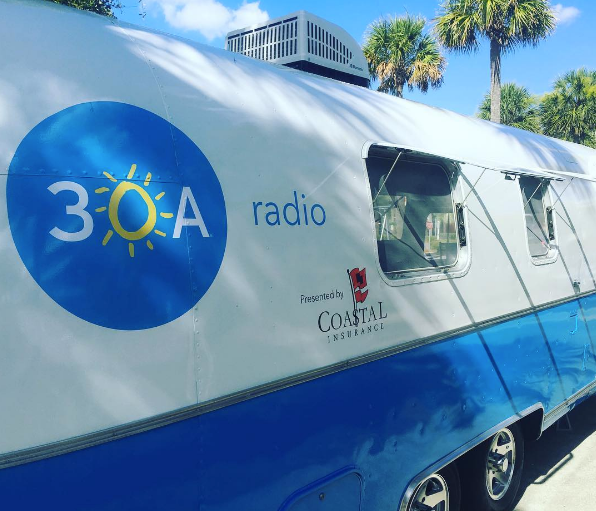
Davis is the Director of Sales for The 30A Company advertising department, and programs and manages 30A Radio. Davis recently got his hands on one of our AR12 Mixers and we wanted to hear how it was treating him and improving his workflow.
- Tell us about yourself…
- Graduated from LSU in broadcasting, been in radio for 25 years. We launched 30A Radio digitally over 2 years ago, broadcasting 100% online via our website, and our free 30A app for iPhone and Android. After leaving FM radio, I really wanted to find a fit digitally to take everything I had learned to the next level. Our main project is expanding the 30A lifestyle into perimeter markets and getting our 30A Radio Airstream to regional music festivals in the Southeast for interviews and sessions with our core artists.
- What PreSonus products have you used and which do you currently use?
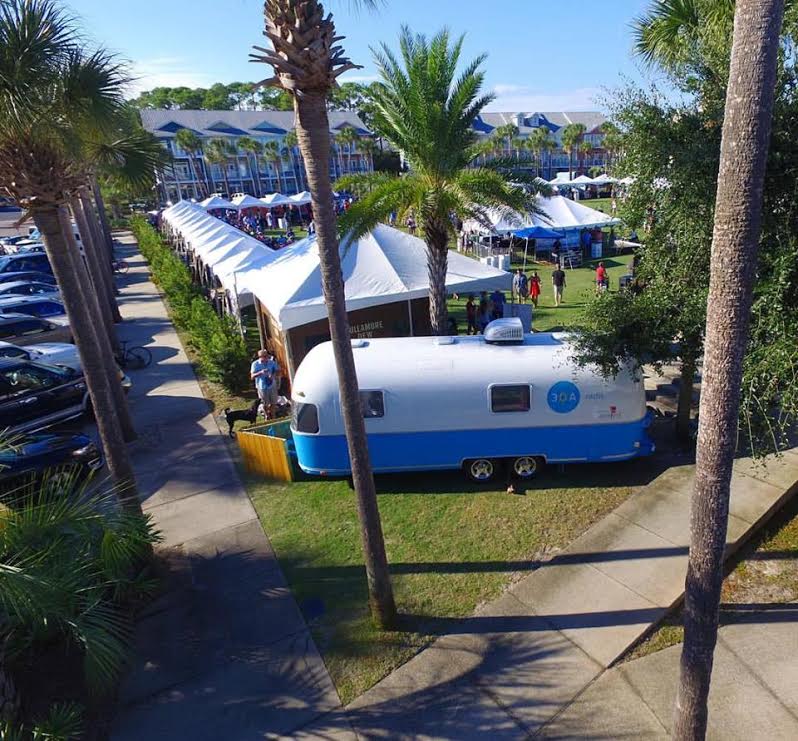
- We use the StudioLive AR12 USB for our Airstream performances, interviews, and podcasts.
- What led you to choose the AR mixer?
- The new AR 12 seemed to fit every capability we needed in such a tight space. We have performances and record in an Airstream. The ability to record directly on the mixer and PreSonus’ reputation was key… and being from Baton Rouge helped. GEAUX TIGERS!
- Having used the AR Mixer, what do you like most about it? What are you using it for?
- We use it for bands that stop in and they play songs which we produce and insert into rotation on 30A Radio. The easy to use functions, and recording on the board were key.
- What mixer feature have proven particularly useful and why?
- Recording easily was key. But the FX and low cut options help. We tend to record in areas that may have a lot of exterior noise, and we can limit some of that pretty easily with dynamic mics.
- How does the AR Mixer compare to other mixers you have used? What’s better, what’s not as good, what does it give you that other mixers don’t?
- It lets me work quickly, on the fly. Tuning up different mics is pretty easy for a guy that is learning to use a board for recording sessions. We have limited time to set up sometimes, and don’t want the band to have to wait too long. So making them sound great quickly is key.
- Any features on your wish list for us to add in future updates?
- Not sure if you can boost the headphone jacks a bit…but that would be one.
- Any user tips or tricks or interesting stories based on your experience with the AR Mixer?
- Recently had John Driskell Hopkins of the Zac Brown Band in the Airstream for a session. He has a home studio and helped fine tune his session. It was bike week at 30A so it was pretty noisy. John suggested using the low cut to get the “Harley” sound out… and it did! Bikes were passing right by us and we didn’t hear them at all on the recordings.
- What’s next for 30A Radio?
- We are really not pushy with 30A Radio, it’s there for our fan base. We try to tell the story of our area, and give the vibe of what we see and do every day here. I guess what’s next is finding out what our limits are in the Airstream with bands and performances. Definitely have a bucket list of artists we’d love to host at some point. Either here or on the road.
- Any final comments about PreSonus?
- It really appears that you guys are user-friendly, and take suggestions and integrate them into upgrades and newer versions of your equipment. And that’s awesome!
- What’s it like working at the beach?
- It’s unreal to think what I have done in the past, got me to this great position. Working in a corporate environment and typical “sales” management for clusters of stations makes you age quickly. I took the best of what that environment was like, and came up with a new template for 30A Radio and our advertising department. Being able to have your feet in the sand, and do radio is quite amazing. We really do that…I swear. Now we can bring the beach to feeder markets for us with our Airstream studios.
- What are your social media handles?
- Facebook: https://www.facebook.com/30Aradio/
- Twitter: @30ARadio
- Instagram: @30ARadio
- Web: 30a.com
Learn more about our StudioLive AR Hybrid Mixers here!
Pete Stewart on Leaving Pro Tools behind for Studio One 3.2
Grammy-winning music producer, engineer and songwriter Pete Stewart with Fourth Wall Music Production has over a decade of experience in the industry and a trophy case of awards. Here Pete shares about his frustrations with Pro Tools and why he chose to try Studio One for free for 30 days. After the trial he was hooked and his workflow has never been the same. Now with 3.2, it keeps getting better.
If you’ve been holding off on crossing over to the most quickly-growing DAW on the planet, there’s never been a better time than now! Save $50 to crossgrade until April 30! – See more HERE!
Follow Pete on Twitter and Instagram!
Learn more about StudioOne 3.2 and try Studio One for FREE here!
#TeamPreSonus Spotlight: Paul Peters!
Who are you, where are you, and what do you do?
#TeamPreSonus Spotlight: Rhett Mouton!
[We decided it best to give some recognition to our more vocal advocates—and what better way than via a blog series?]
Who are you, where are you, and what do you do?
Rhett Mouton: Producer, engineer, writer/composer.
How were you introduced to PreSonus?
Years ago I was asked by a young band to go to their rehearsal studio to help them record a song. That rehearsal studio turned out to be in Jim Odom’s back yard.
What PreSonus software/hardware do you use and for what purpose?
I use the Central Station for monitoring, ADL 600 for obvious reasons, StudioLive 24.4.2 for live sound and multitracking, Studio One 2 Professional for writing, composing, producing, mixing and mastering.
What’s so great about PreSonus, anyhow?
They always seem to be thinking a step ahead of the curve when developing new products.
What’s the last big project that you worked on using PreSonus gear?
I produced, mixed, and mastered a band called Meriwether’s debut album titled, “Make Your Move” which resulted in a distribution deal and record deal with Suretone/Interscope records.
What are you working on now—or next?
I am currently mixing and mastering projects for clients. I am also composing/writing original music with the intention of licensing for placement in film, television and video games.
Where can our readers learn more about you online?
#TeamPreSonus Spotlight: Johhny ‘TheMuzic’ Geib!
Who are you, where are you, and what do you do?
My name is Johnny Geib and I live in Wheeling IL, 24 miles northwest of downtown Chicago. I work 3rd shift for a company contracted by the IL Tollway to do maintenance and systems support of their Toll Collections systems. 45+ hours a week and never a dull moment. Part time, I run a home-based recording facility for both clients and my own music, and have been doing so for more than 25 years. I started out with a 4-track Tascam, then a Fostex Open Reel 8 track, graduated to a VS2480 in 1998 and Akai DPS24 a year later.
I was a Cubase\Nuendo user from 2003 till I discovered Studio One 1.0 when I bought a Firestudio Mobile. I used the FS Mobile with Cubase and a FaderPort till I upgraded to Cubase 5. The update was a disaster and put me out of business for a month. That’s when I remembered the free copy of Studio One Artist that came with my FS Mobile. Since I had to get something done while I waited for tech support to get back to me, I installed Studio One Artist and was totally blown away. I was recording and mixing within an hour and saved two clients that were ready to walk because of the delay. From that point, I never looked back and purchased Studio One Professional that following Friday. I have been a PreSonus fan boy since. And now, with PreSonus making studio monitors, my studio is about 95% PreSonus!
 Well, not sure you’ll have room for this list in the blog but here goes: Studio One 2.5.2, Capture, Monitor Station, FaderPort, Audiobox 22VSL, AudioBox 1818VSL, Studio Channel, FireStudio Tube, FireStudio Mobile, HP-60 headphone amp, Eris E5 monitors, two M7 mics, two SD7 mics, three HD7 headphones, DIGITube and a StudioLive 16.4.2!
Well, not sure you’ll have room for this list in the blog but here goes: Studio One 2.5.2, Capture, Monitor Station, FaderPort, Audiobox 22VSL, AudioBox 1818VSL, Studio Channel, FireStudio Tube, FireStudio Mobile, HP-60 headphone amp, Eris E5 monitors, two M7 mics, two SD7 mics, three HD7 headphones, DIGITube and a StudioLive 16.4.2!

